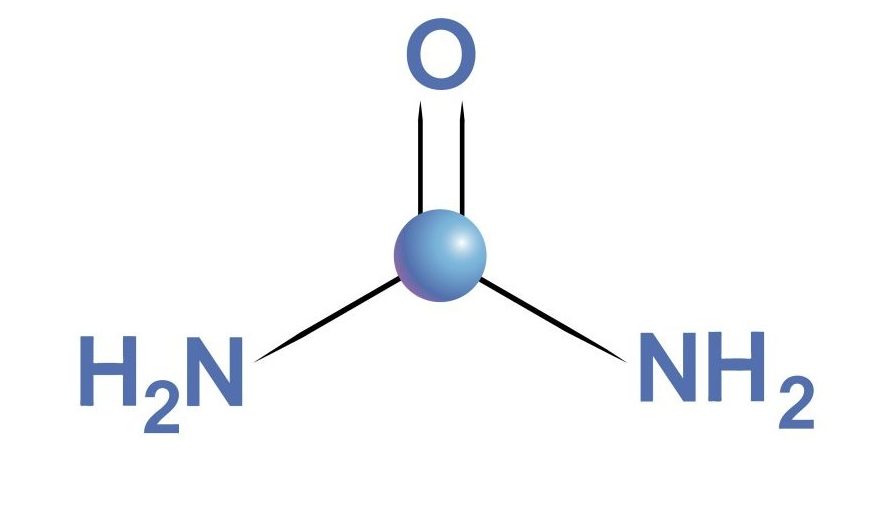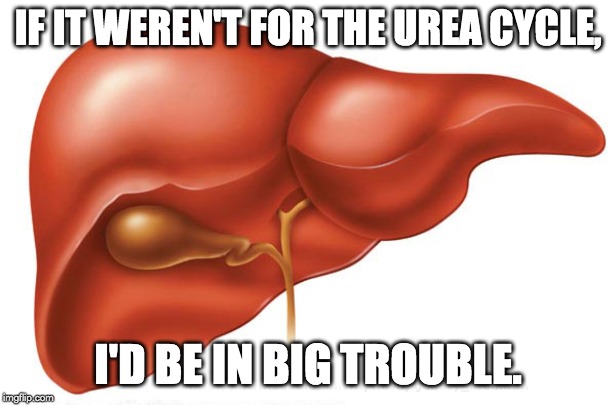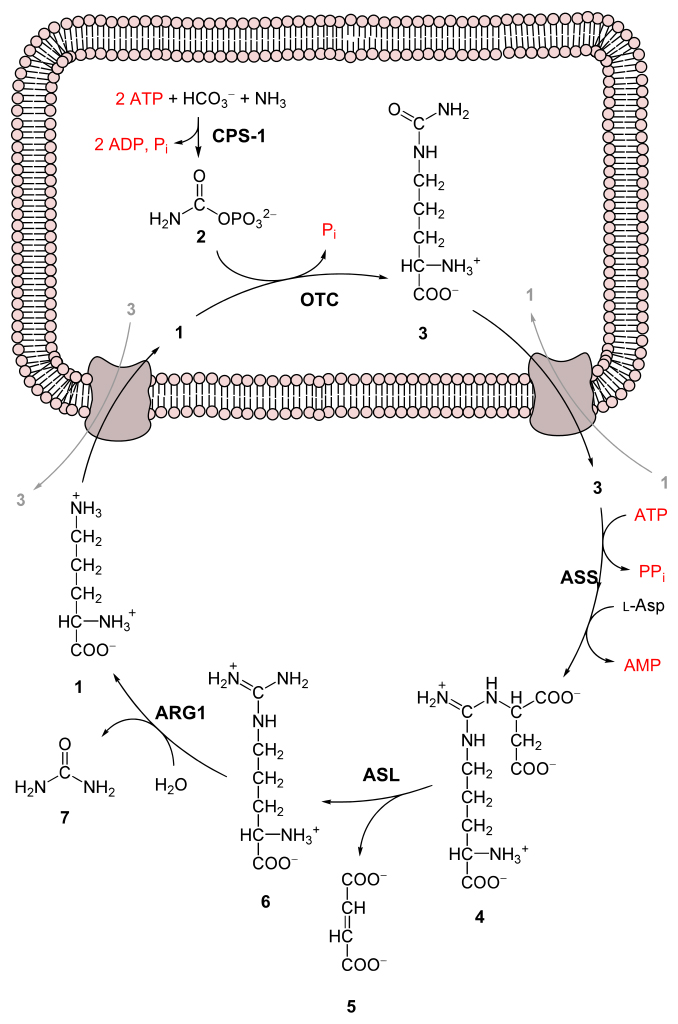Table of Contents (click to expand)
Urea is a relatively non-toxic organic compound that aids in the breakdown of nitrogen-containing compounds and potentially toxic metabolic byproducts. Urea is produced in the liver through the Urea Cycle, which occurs in both the mitochondria and cytoplasm of liver cells.
Our bodies are incredible machines, executing billions of different actions and commands simultaneously, with our trillions of cells operating in unison to keep us thriving and functioning. On a cellular level, however, these metabolic activities can be broken down into chemical reactions, some of which create byproducts that the body needs to eliminate. Urea is the final, non-toxic product of such a metabolic cycle, which can then be eliminated from the body. Before we go into the details of why urea is so important, let’s take a look at how and where it is produced.

The Urea Cycle
The majority of the food that we eat can be categorized as either fats, proteins or carbohydrates, all of which can produce energy for the body when it is metabolized or broken down. Carbohydrates are broken down into sugars through a number of enzymatic processes, which can then be metabolized for energy. Fats and oils are broken down into fatty acids and glycerol in the small intestines. Finally, proteins are broken down into amino acids by hydrochloric acid and specialized enzymes, at which point those amino acids move into the small intestine.

The Urea Cycle, also known as the Krebs-Henseleit Cycle, is how these small chains of amino acids, that are not reconstituted for new protein production, can ultimately be metabolized to generate energy for the body. When amino acids are metabolized in the liver, they produce free ammonia, as well as carbon dioxide. Unfortunately, ammonia is highly toxic to the body, and must be converted rapidly into something less dangerous, as the buildup of ammonia in the body could be fatal. Thus, ammonia enters the Urea Cycle and is converted into non-toxic urea, which the body can easily eliminate.

The cycle takes place in the mitochondria and cytoplasm of liver cells, beginning in the mitochondria. The ammonia and carbon dioxide combine, with the help of 2 ATP, to form carbomyl phosphate. Another amino acid from the cytoplasm combines with carbomyl phosphate, helped along by the enzyme ornithine trans-carbomylase to form citruline. Citruline is then transported into the cytoplasm, where it reacts with the amino acid aspartate to form argino-succinate. When combined with the enzyme argino-succinase, it produces fumarate and arginine. Finally, the enzyme arginase splits arginine to produce urea and ornithine, thus completing the cycle. Ornithine rejoins the Urea Cycle and can be reused, while urea, being a soluble compound, can be absorbed by the blood and moved to the kidneys.
While that explanation may have been heavy with enzyme names, the short story is this: ammonia enters the Urea Cycle, goes through four transformative steps, and for the overall price of 3 ATP, liver cells will produce non-toxic urea as a result. This can then be carried to the kidneys and excreted as a significant part of our urine every day.
Also Read: What Is Glycolysis?
Why Is Urea Important?
In our bodies, urea is a safe container for eliminating excess nitrogenous waste in the body, ensuring we don’t have a dangerous buildup of ammonia in the liver. Furthermore, urea plays a role in the reabsorption of water in the kidneys, and is important for maintaining a good water balance in the body. It functions as a signal to the body to produce hyper-concentrated urine, rather than further draining the body of water.
Proper maintenance of urea and ammonia levels in the body is critical to overall health, as an excess of either can cause acid-base imbalances, as well as serious illness. If a person or infant is suffering from enzymatic deficiency and the urea cycle cannot function normally, vomiting and coma may follow. Ammonia is an incredibly potent compound and must not be allowed to accumulate in the body. The Urea Cycle and the proper movement/elimination of urea through urine is a life-saving sequence that may process 10-20 grams of potentially deadly ammonia every single day!
Also Read: Excretory System: Organs, Function & Definition
A Final Word
The metabolic pathways of the body are fascinating and foundational aspects of our survival. The Urea Cycle may not get as much attention as glycolysis or the Citric Acid Cycle, but its production of urea allows us to process excess nitrogenous waste in a fast and efficient way. It takes only a small expenditure of energy to create urea, but this cycle allows our bodies to utilize proteins as a major energy source, and the non-toxic byproduct aids in the regulation of urine concentration and helps maintain acid-base homeostasis!
Also Read: What Are The Different Steps In Cellular Respiration?
How well do you understand the article above!

References (click to expand)
- Weiner, I. D., Mitch, W. E., & Sands, J. M. (2015, August). Urea and Ammonia Metabolism and the Control of Renal Nitrogen Excretion. Clinical Journal of the American Society of Nephrology. Ovid Technologies (Wolters Kluwer Health).
- Walker, V. (2009, September). Ammonia toxicity and its prevention in inherited defects of the urea cycle. Diabetes, Obesity and Metabolism. Wiley.
- (1959) periments in the rat (2-4) and man (5) have twenty-sixth days .... dm5migu4zj3pb.cloudfront.net
